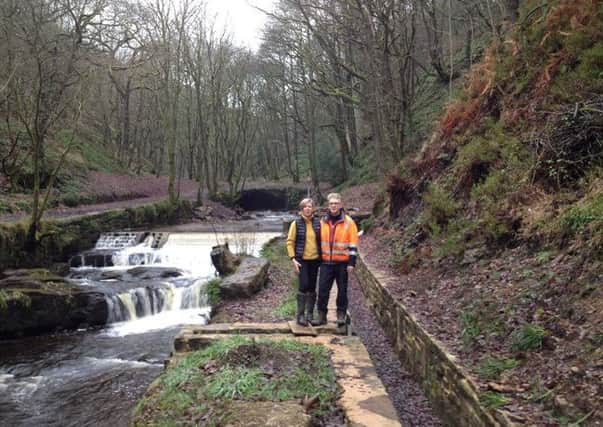Back to future to realise an eco £450,000 dream


The hydro scheme uses the original weir and water channels that supplied the industrial revolution-era mill when it was first built in 1802, and will produce enough clean electricity to power around 40 homes and save 60 tonnes of CO2 per year from going into the atmosphere.
The £450,000 project is the brainchild of Bede and Jane Mullen, who have lived by the ruins of Lower Lumb mill in Hebden Bridge for over 30 years.
Advertisement
Hide AdAdvertisement
Hide Ad“Ever since we first moved to the valley, we’ve dreamed of harnessing the incredible energy that the river produces all year round”, said Bede.
“When I retired recently, Jane and I decided to turn our dream into reality, and we’ve spent the last three and a half years planning and constructing the new hydro turbine.”
The scheme uses state-of-the-art technology, including a specially-commissioned turbine which is sited in a small building that has been designed to fit in with the surrounding buildings.
At its peak, it will deliver 40 kilowatts of electricity, connected directly to the National Grid. At the heart of the scheme is the original weir and goyt that directed water to the watermill that provided power for the cotton mill that occupied the site from 1802 until its demolition in the 1930s.
Advertisement
Hide AdAdvertisement
Hide AdThe project – which took two years to plan and a further year and a half to construct – was completed last Thursday, just weeks before a change in government subsidies, which are a crucial part of the project’s income.
Bede and Jane funded the scheme by remortgaging their house, so the change in the subsidy has been a big concern for them.
“The feed-in tariff changes at the end of 2016,” explained Jane Mullen. “With the current tariff, we’ll recoup our investment in around 14 years – but without it, it would take over 100 years. So it’s been extremely stressful to complete this close to the change.”
The construction team has been working long days in all weather conditions to meet the deadline.
Advertisement
Hide AdAdvertisement
Hide AdBut now that the scheme is completed, the residents of Hebden Bridge – long known for their support for environmental projects and clean energy – can feel proud that they’ve got a reliable source of clean, low-carbon electricity in their valley, Bede and Jane feel.